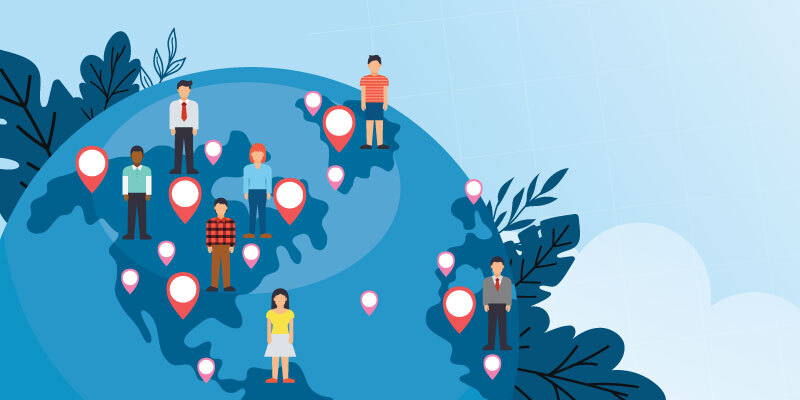
The world is a huge place. It houses 8 billion people, over 8 million animal species, and countless plants and insects. It houses all of us while 71% of it is covered in water and feeds us and gives us access to its resources. But, as the population grows at an alarming rate of one percent per year and resources deplete at even higher rates, we have to wonder — will we ever run out of space on Earth?
The answer is not easy and depends on many, many factors. But we can get an idea if we understand how to define the concept of ‘space’ and look at how the population will grow in the next 100 years.
Out of the 29% of the Earth that is land, half is used for agriculture – farms, irrigation systems, homes for cattle (the other half is either frozen or barren land like deserts). The other half is mostly made up of forests and shrubberies (areas covered in shrubs). And what is left – 1% – is made up of cities, towns, villages, roads, and any other human-built space. So, we already have very little physical space to begin with. Even that one percent of land is unevenly distributed around the world, thanks to geography and the way we humans have built our communities.
We’ve already established that half of the habitable (or livable) land on Earth is used for agriculture. This is important to look at because this half of the Earth is used to feed us and other animals, so taking that agricultural land to use to make homes for the increasing population, is not an option.
Resources are another important thing that take up land space. Fuel, food, water, wood, soil, and minerals are all vital resources that we need for our survival. Hence, we cannot touch the part of habitable land that is taken up by mines, forests, or farms. An increasing population will only put more pressure on these areas as more people mean we need more of all these resources — which we may not have.
As it is with most things, global warming is the biggest villain with this problem. Global warming and climate change are making sure that we will have to actually ask if there is enough space left for everyone.
Global warming is making water levels rise, and if that happens, almost half the world’s population will face massive floods and will be forced to move. This will reduce the amount of land that is available for us to use.
Climate change is also literally changing the landscape. We have fewer forests due to deforestation and more frequent forest fires. Agricultural land is losing fertility, thanks to use of harmful pesticides and farming practices. Additionally, as cities and towns expand to house more people, farm lands, mountainous regions, and forests are being converted into buildings.
So, will we run out of space for people in the future?
While it seems like a very real possibility, experts suggest that it may not actually happen. The world’s population is set to increase to over 9 billion by 2050, but experts believe that it will also stabilise after that, which means it won’t grow to 10 billion any time soon.
If we take strict, preventative measures against global warming today, we may still have hope for an increasing population. According to the World Health Organisation, there are more than 820 million people who go hungry every day, and around 784 million people don’t have access to clean water. Even if we have enough land to live on, we have to also ensure that we have enough to survive.
What do you think cities in 2050 will look like? Let us know in the comments.
1. How many people can the world support?
Some experts say the world’s capacity for people is around 9-10 billion.
2. How much space is there per person in the world?
As some mathematicians concluded, with the current population and available land, 0.011 square km of land is available per person.
3. How much space does a human take up?
In terms of physics alone, a human takes up an average of . 0664 cubic metres of space. The total volume of all humans in the world is about 485 million cubic metres.
Madhavi is passionate about everything to do with books, art, literature, films, trivia and food. A former journalist, she believes that asking questions makes life interesting.